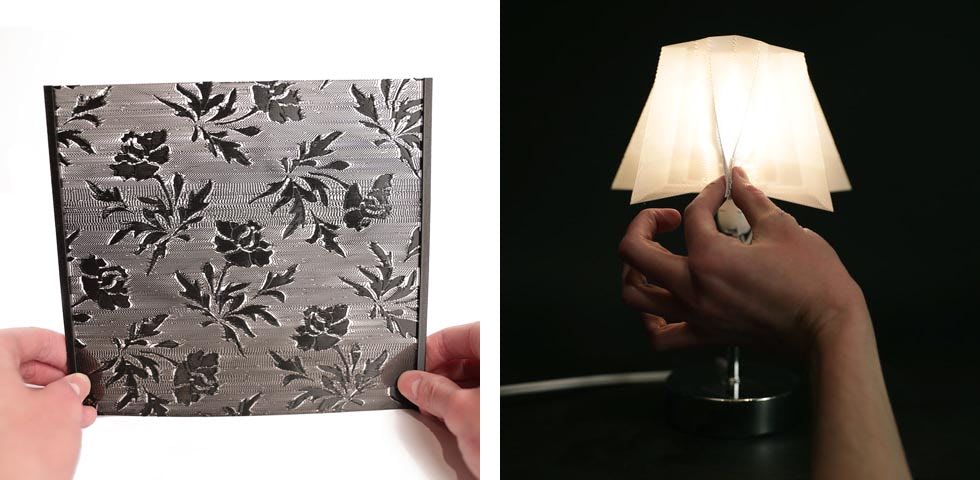In the world of filament deposition 3D printing, a common printing error that leads to failed prints is under-extrusion. When a printer is severely under-extruding, it will deposit drops, sometimes connected by thin strings of material, rather than a steady stream. Jack Forman, an MIT Media Lab graduate student, devised a way to turn that defect into a method of printing objects with fabric-like properties.
Forman calls them DefeXtiles, an appropriate portmanteau if there ever was one. By precisely under-extruding via a process he refers to “glob stretch,” each of the regularly deposited globs is stretched into a wispy strand that links it to the next glob. It’s those thin strands that give DefeXtiles their flexibility and stretchiness. Forman discovered the phenomenon accidentally while trying to print vases with under-extrusion. “I was annoyed because the defects produced were perfect and periodic,” he said, “but then when I started playing with it, bending it and even stretching it, I was like, ‘whoa, wait, this is a textile.’ It looks like it, feels like it, bends like it, and it prints really quickly.”
He says the texture is similar to mesh jersey fabric. What separates DefeXtiles from other printed fabrics is that they’re much thinner, and they can incorporate images and text into 3D shapes. Being thinner makes it lighter and easier to fold while also making it cheaper to print.
Forman presented his DefeXtiles project at the Association for Computing Machinery Symposium on User Interface Software and Technology, so expect to see more research applications soon, especially in the medical field where custom meshes have a lot of value. But Foreman and his colleagues at the Tangible Media research group have already demonstrated several plausible applications, such as clothing, curtains, netting, and soft barriers.
Some of the DefeXtiles they’ve printed:
- – Full-sized skirt that was produced as a single 30-hour print and unfolded after printing
- – Interactive lamp with conductive filament that gets brighter and dimmer by pinching the lampshade
- – Tendon actuator doll with flexible joints that requires no supports or post processing
- – Badminton shuttlecock printed in TPU for extreme durability
- – Pleated pockets that iron onto existing shirts
- – 70-meter roll of continuous fabric as a single print
That’s quite a range of functionality for a single printing trick that’s essentially free. Foreman likes that last part, saying “In general, what excites me most about this work is how immediately useful it can be to many makers. Unlike previous work, the fact that no custom software or hardware is needed — just a relatively cheap $250 printer, the most common type of printer used — really makes this technique accessible to millions of people.”
Images courtesy of Jack Forman










